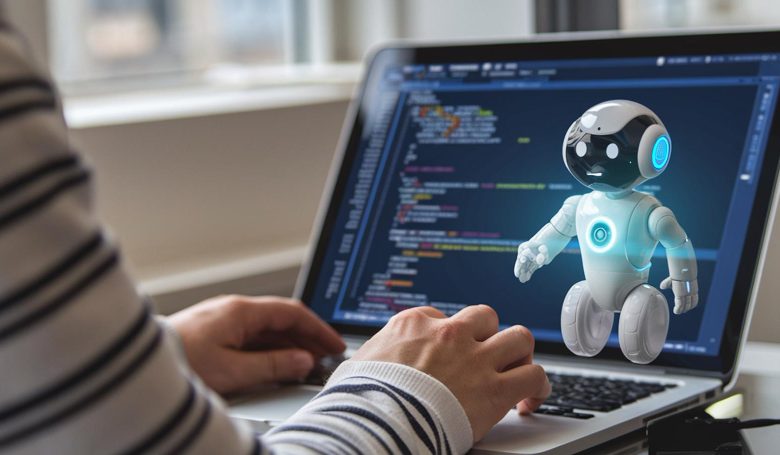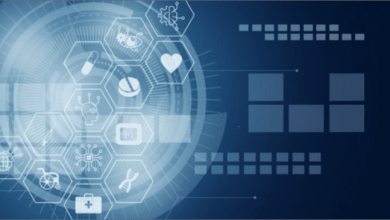
In today’s fast-moving tech landscape, a persistent problem has returned to the spotlight: the global tech talent gap. Organizations everywhere—from startups to multinationals—are struggling to find the people with the right skills, in the right place, at the right time.
At the same time, a new generation of tools – namely AI coding assistants – promise to reshape how software is developed, potentially amplifying human capacity and narrowing that talent divide.
But can they actually close this gap? Or are they just another layer of promise? This article takes a news-style look at the situation: the challenge, the tool, the evidence and the future.
The World Is Running Out of Developers
Every innovation depends on someone who can make ideas real in code. But according to global studies, by 2030 the shortage of qualified tech workers could hit 85 million.
The reasons are complex. Universities can’t train talent fast enough. Startups compete with big tech for the same small pool of engineers. And as AI, cloud, and cybersecurity skills evolve faster than syllabuses, even experienced developers find themselves scrambling to catch up.
This isn’t just a recruitment headache—it’s a brake on global innovation. Delayed launches, security risks, and ballooning costs are all symptoms of the same disease: not enough hands on the keyboard.
When the Machine Becomes a Teammate
Not long ago, automation in coding meant scripts that ran tests or deployed builds — tools that did what you told them to, nothing more. Today, the landscape feels almost alive. Developers no longer just command their tools; they converse with them.
A programmer can now describe an idea in plain English — “Build a function to calculate delivery fees by distance and time” — and watch as their AI assistant writes, explains, and optimizes that code in seconds. It’s not magic. It’s collaboration.
This shift marks the first time in history that software is being written in dialogue.
The AI learns from your habits, your language, and your errors. It notices patterns in your logic. It can remind you of forgotten dependencies or flag performance issues before they explode. It’s not replacing you — it’s pair programming with you.
The modern engineer’s desk now hosts two minds: one human, one algorithmic. The human brings context, empathy, and intention; the machine brings infinite memory, instant recall, and the ability to test a thousand possibilities before lunch.
Together, they form a new creative rhythm — human curiosity meets machine precision.
As one developer at a global SaaS firm recently described it, “It feels like having a senior colleague who never sleeps and never gets frustrated when I break something.”
The best part? The relationship improves over time.
Every prompt, correction, and feedback loop makes the AI sharper — and makes the developer more articulate and efficient. What once felt like automation now feels like mentorship, partnership, and even friendship.
That’s the real revolution: the moment when a tool stops being just a line of code — and starts becoming part of the team.
The Human Side of Augmentation
What makes this technology transformative isn’t the code it writes—it’s what it frees humans to do.
Developers spend nearly half their time on repetitive work: boilerplate, debugging, renaming, testing. AI assistants absorb that drudgery, letting people focus on design, architecture, and problem-solving.
For junior engineers, it’s like pairing with a patient senior mentor who’s always available. For seasoned professionals, it’s a productivity multiplier—a way to prototype faster, explore ideas, and avoid burnout.
The result? Teams move faster. Individuals learn faster. And smaller companies can finally keep pace with larger competitors.
“We’re Building With Fewer People, But More Power”
Across the globe, engineering managers are discovering that AI-enhanced workflows let them do more with less. A 2024 McKinsey survey found that developers using AI copilots finished certain tasks 30% faster and made fewer syntax errors.
This doesn’t mean teams are shrinking—it means they’re stretching farther.
For example, outsourcing software development companies in Asia and Eastern Europe now deliver enterprise-grade projects with smaller, more agile teams. By integrating AI coding assistants and other AI-powered productivity frameworks, these companies combine local engineering expertise with cutting-edge automation—achieving the speed and scalability of global tech hubs without the overhead.
It’s not about cutting costs; it’s about closing gaps: between regions, between budgets, and between potential and performance.
From Code Monkeys to Creative Engineers
Ironically, as machines take over more of the routine coding, developers are becoming more human.
They spend less time memorizing syntax and more time imagining possibilities.
They talk with designers, strategists, and users instead of being buried in implementation details.
They turn into product thinkers—people who ask, “What problem am I solving?” rather than, “Which framework should I use?”
AI assistance doesn’t erase craftsmanship; it redefines it. The best engineers of the AI era will be those who can direct and critique their digital collaborators, not those who can out-type them.
Can AI Really Fill the Talent Void?
Here’s the honest answer: not completely—but it can make the gap survivable.
Think of the talent shortage as a dam holding back global innovation. AI coding assistants aren’t dynamite to blow it open; they’re valves that relieve pressure.
They make every existing developer more productive. They allow smaller countries to compete in global software delivery. They shorten onboarding for juniors and extend the creative lifespan of seniors.
Over time, this might not “eliminate” the shortage—but it could flatten its curve enough to keep the digital economy growing.
The New Shape of Software Teams
The organizational ripple effects are already visible:
- Smaller, cross-functional squads. With AI handling the repetitive grind, teams can stay lean without sacrificing output.
- Hybrid skill sets. Developers learn prompt engineering, domain design, and data literacy—skills once outside their scope.
- Global inclusion. Remote teams from Vietnam, Kenya, or Poland can deliver at Silicon Valley speed.
In effect, AI levels the playing field. Talent is still precious—but geography and scale matter less than they used to.
Every Revolution Has a Learning Curve
Of course, this transformation comes with caveats. AI-generated code can be wrong—and confidently so. It can plagiarize open-source material or introduce subtle security flaws.
The fix isn’t fear—it’s education and oversight.
Developers must learn to verify AI outputs just as they’d review a teammate’s pull request. Companies need guardrails: code audits, ethics policies, and training programs that teach “collaboration literacy” with machines.
In other words: AI assistants don’t remove the need for humans. They demand better humans—critical thinkers, skeptics, teachers, and reviewers.
Leading With Curiosity, Not Fear
Tech leaders who view AI as a threat will miss its deeper promise.
The smartest ones are already running experiments: pairing AI with testing teams, automating documentation, integrating copilots into CI/CD pipelines.
The key is not to “roll out AI” like a tool, but to cultivate a mindset:
- Curiosity over compliance.
- Learning over panic.
- Measurement over assumptions.
When teams embrace that culture, the numbers speak for themselves—fewer bugs, faster shipping, happier engineers.
The Future Isn’t “Human vs. Machine”—It’s “Human with Machine”
We’ve spent years debating whether AI will replace us. That’s the wrong question. The right one is: How can it enhance us?
The rise of AI coding assistants signals a profound cultural shift: software development is becoming a dialogue between human intent and machine execution.
The winners of this new era won’t be those who code faster—they’ll be those who think better, communicate clearly, and harness AI as a creative ally.
So no, AI coding assistants won’t magically erase the global talent gap. But they will reshape it—turning scarcity into possibility, and crisis into collaboration.
And maybe, just maybe, that’s the beginning of a more balanced digital world.

